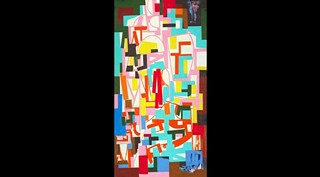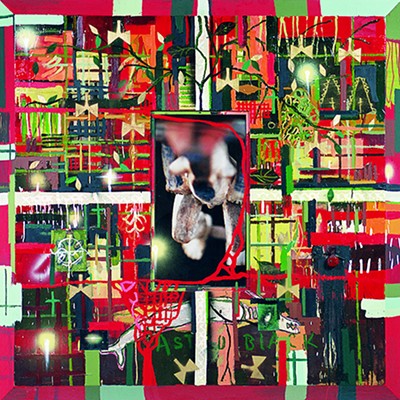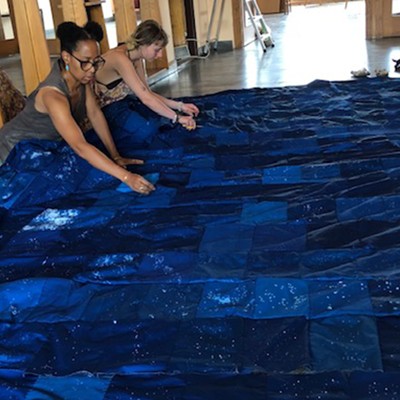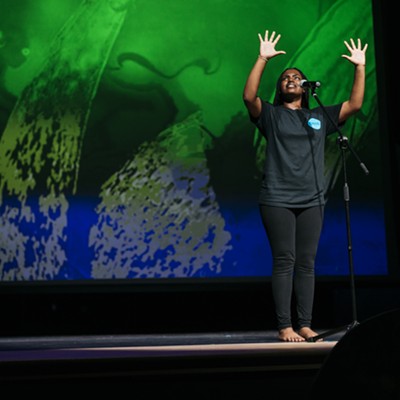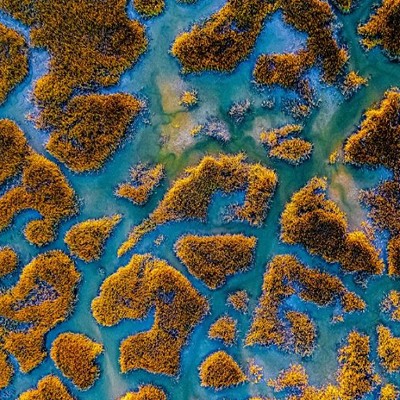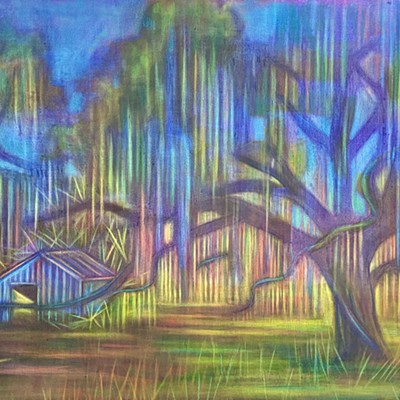Most everyone is familiar with the pop culture-influenced abstract art of Andy Warhol in the late ‘60s. But Warhol's fame was in some ways made possible by other American abstract artists working decades prior, at a time when New York City was not synonymous with fine art.
The hit travelling exhibit "Modern Masters from the Smithsonian American Art Museum" will open at the Jepson Center for the Arts this week.
Smithsonian American Art Museum curator Virginia Mecklenburg gives a free lecture at 6 p.m. at the Nov. 4 opening.
"Abstract expressionism is considered the first American art movement that had international impact," says Telfair Museums Director of Collections and Exhibitions Holly McCullough.
"We're so used to New York being the center of the art world now, but prior to abstract expressionism New York wasn't the center of the art world, that was abroad," she says. "America became an important site of avant garde art because of what these artists were doing."
Featuring artists like Jackson Pollack, Josef Albers, Romare Bearden, Sam Francis, Nathan Oliveira, Anne Truitt, Jim Dine and others, "Modern Masters" comprises 43 paintings and 31 sculptures collected from a bracing and dynamic time in American art propelled by two contrary impulses: A sense of post-World War II optimism and expansionism, along with a dark sense of Cold War-inspired angst.
The Smithsonian's Mecklenburg explains:
"Abstract expressionism had a lot to do with America's emergence on the world stage after World War II," she says. "And it also had to do with the fact that by the early 1950s the Cold War had become more intense. It was the elephant in every room at the time."
The Cold War prompted the creation of the United States Information Agency (USIA), essentially a propaganda arm designed to promote positive views of the U.S. throughout the world. Many of the works in "Modern Masters" were made possible by the USIA effort.
"Most of the exciting new art happening at this point was abstract expressionism and other forms of abstraction. The U.S. sent a huge exhibition of abstract art to Europe to tour capitals of various countries to show that America was really up to par with the centuries of remarkable artistic accomplishment that all European countries could demonstrate," says Mecklenburg.
"A group led primarily by the Museum of Modern Art in New York worked with embassies to promote and proselytize for American culture in Europe, Latin America and to some degree in Asia," she says.
"This was a way to show off cultural prowess at the same time. Some programs involved sending not only painting and sculpture, but also things like the American musical -Oklahoma and South Pacific - to suggest a country that's on the move."
Why abstract art and not something more "official" looking? Part of the point of the propaganda effort was to show that American artists, unlike those in Communist bloc countries, were completely free to create whatever kind of art they wanted to.
However, the artists themselves were products of their times, and in some ways had little in common with the later figures of the ‘60s.
"The art was a great propaganda tool, but in a more meaningful way a lot of these artists fought in the war or were involved somehow in World War II," says Mecklenburg.
"In some ways they were trying to deal with things they saw and felt - the whole notion of who mankind is: If we're capable of doing these horrible things, who are we?"
Modern Masters of the Smithsonian American Art Museum
When: Nov. 5, 2010-February 6, 2011. On Nov. 4 at 6 pm Virginia Mecklenburg, curator at the Smithsonian American Art Museum, discusses the exhibit. The lecture program is free and open to the public. The opening reception is free to members or with museum admission.
Where: Jepson Center, 207 W. York St.
Info: Telfair.org

